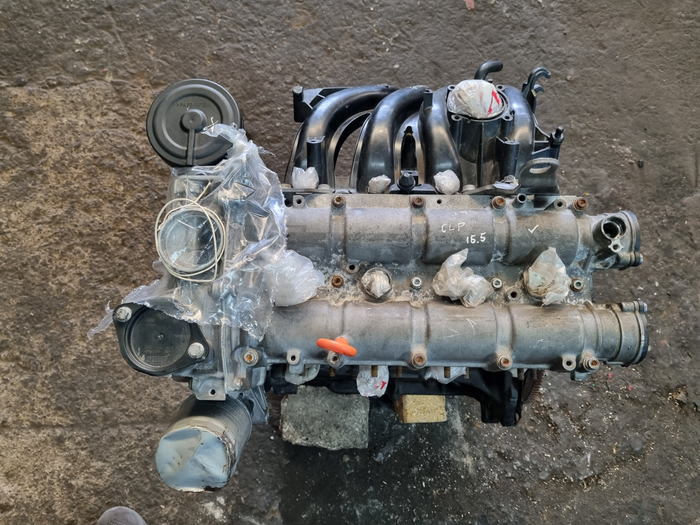Maintain consistent power with a high-performance clp engine.
Maintain consistent power with a high-performance clp engine.
Blog Article
Exactly How a Clp Engine Can Improve Efficiency in Different Industries
The introduction of CLP engines notes a considerable change in functional performance across various industries, driven by their capability to optimize fuel usage and decrease downtime. Industries such as production and logistics stand to gain substantially from their robust design and regular power outcome, which promise to improve operations and improve productivity. As organizations increasingly prioritize sustainability along with effectiveness, the function of CLP engines ends up being much more important. What remains to be seen is how these developments will form the future landscape of commercial procedures and their effect on more comprehensive financial fads (clp engine).
Overview of CLP Engines
CLP engines, or Continual Liquid Propellant engines, represent a substantial development in propulsion technology, especially for area applications. These engines use a constant feed system that permits the sustained expulsion of propellant, causing improved performance and performance compared to conventional strong or hybrid propulsion systems. By preserving a constant circulation of fluid propellant, CLP engines can achieve extra specific drive control, which is vital for steering spacecraft in numerous goal situations.
The design of CLP engines integrates advanced materials and ingenious gas administration systems. clp engine. This causes decreased weight and enhanced integrity, vital factors for long-duration area goals. Moreover, the continual operation minimizes the risk of combustion instability, a typical challenge in standard rocket engines.

Benefits in Manufacturing
The manufacturing of Continual Fluid Propellant (CLP) engines presents numerous remarkable advantages that boost both performance and cost-effectiveness. One of the main advantages is the structured production procedure, which reduces the complexity connected with standard propulsion systems. By utilizing fluid propellant, manufacturers can achieve higher precision in engine performance, leading to optimized power outcome and lowered waste.
Additionally, CLP engines facilitate a greater level of modularity, enabling easier integration into different manufacturing lines. This adaptability can substantially lower preparations and boost total functional flexibility. The usage of CLP modern technology additionally has a tendency to decrease the demand for considerable maintenance due to fewer moving parts, which translates into lowered downtime and functional expenses.

Applications in Logistics
Leveraging Constant Fluid Propellant (CLP) engines in logistics provides substantial advantages in operational effectiveness and dependability. These engines supply a robust solution for different transportation needs, making it possible for the smooth activity of products across large distances. The intrinsic design of CLP engines permits constant power output, which translates right into smoother and extra predictable transport timetables.
Among the essential applications of CLP engines in logistics is in durable freight transport, where they can drive both ground and airborne automobiles. Their ability to preserve high performance under varying load problems makes sure that delivery timelines are fulfilled, therefore enhancing consumer fulfillment. Furthermore, CLP engines can be integrated into automated logistics systems, assisting in real-time monitoring and maximizing route preparation.
Moreover, the durability of CLP engines reduces maintenance downtime, allowing logistics companies to maximize their functional abilities. This is specifically advantageous in warehousing Bonuses procedures, where performance in dealing with and transporting items is critical. As logistics proceeds to advance, the assimilation of CLP engines stands for a forward-thinking approach that not only improves efficiency but additionally sustains the sector's expanding needs for dependability and speed.
Effect On Energy Efficiency
Just How do Continual Liquid Propellant (CLP) engines boost energy effectiveness in transportation? CLP engines make use of a consistent circulation of fluid fuel, optimizing burning procedures and preserving a stable drive output. This layout lessens energy losses related to typical combustion engines, where fuel delivery can differ and cause ineffectiveness.
The constant procedure of CLP engines permits an extra effective thermal cycle, leading to higher certain impulse compared to traditional engines. clp engine. This converts to decreased gas intake for the same amount of job done, dramatically reducing functional expenses across different transportation sectors, including aeronautics and maritime markets
Additionally, the ability of CLP engines to preserve ideal efficiency under varying tons conditions reduces the requirement for regular acceleration and slowdown, even more boosting gas efficiency. Improved energy efficiency not just contributes to cost financial savings but also results in decrease greenhouse gas emissions, lining up with worldwide sustainability objectives.
Future Trends and Innovations
Emerging developments in Continuous Fluid Propellant (CLP) engine innovation assurance to transform the landscape of transport performance and sustainability. As markets pivot toward greener options, CLP engines stand at the leading edge, integrating cutting-edge products and style methods that improve performance while minimizing ecological effect.
One of the most encouraging patterns is the adoption of crossbreed systems that incorporate CLP engines with renewable resource resources. This harmony can optimize gas usage and decrease emissions, straightening with worldwide sustainability goals. Moreover, innovations in computational fluid characteristics (CFD) are facilitating the style of even more aerodynamically efficient engines, leading to minimized drag and improved gas effectiveness.
Furthermore, the advancement of smart surveillance systems is set to boost operational performances. These systems take advantage of information analytics and IoT innovation to maximize engine performance in real-time, making certain that the engines operate within their most reliable parameters.
As study continues to check out different propellant formulas-- such as biofuels and artificial fuels-- the future of CLP engines looks encouraging. By utilizing these technologies, industries can not just improve their effectiveness yet also add significantly to a cleaner, a lot more lasting future in transportation.
Final Thought
In final thought, CLP engines stand for a substantial advancement in effectiveness across multiple sectors. The combination of home advanced products Discover More and less relocating parts reduces upkeep requirements, while alignment with sustainability goals placements CLP engines as an essential modern technology for the future.
Report this page